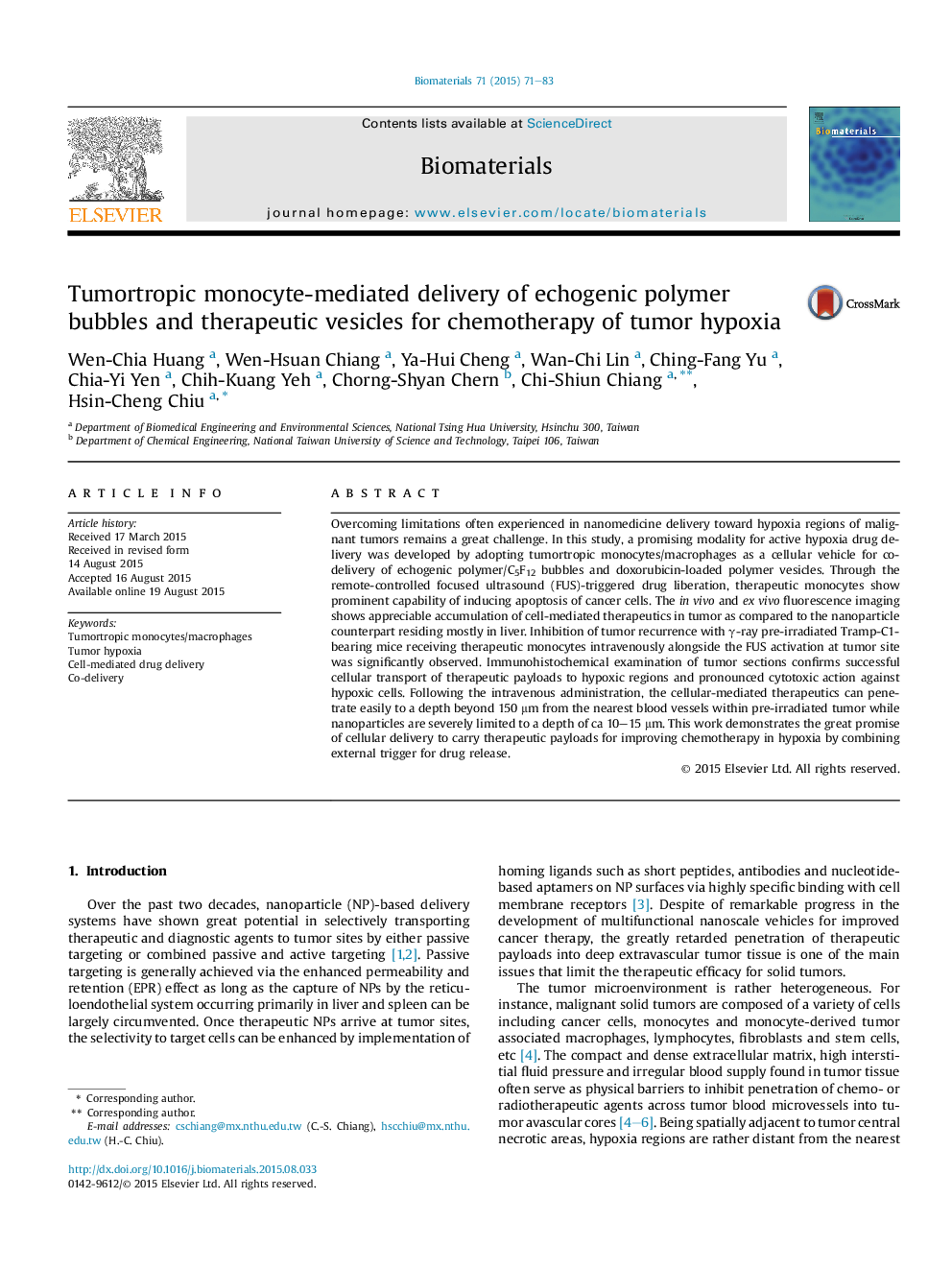| Article ID | Journal | Published Year | Pages | File Type |
|---|---|---|---|---|
| 5492 | Biomaterials | 2015 | 13 Pages |
Overcoming limitations often experienced in nanomedicine delivery toward hypoxia regions of malignant tumors remains a great challenge. In this study, a promising modality for active hypoxia drug delivery was developed by adopting tumortropic monocytes/macrophages as a cellular vehicle for co-delivery of echogenic polymer/C5F12 bubbles and doxorubicin-loaded polymer vesicles. Through the remote-controlled focused ultrasound (FUS)-triggered drug liberation, therapeutic monocytes show prominent capability of inducing apoptosis of cancer cells. The in vivo and ex vivo fluorescence imaging shows appreciable accumulation of cell-mediated therapeutics in tumor as compared to the nanoparticle counterpart residing mostly in liver. Inhibition of tumor recurrence with γ-ray pre-irradiated Tramp-C1-bearing mice receiving therapeutic monocytes intravenously alongside the FUS activation at tumor site was significantly observed. Immunohistochemical examination of tumor sections confirms successful cellular transport of therapeutic payloads to hypoxic regions and pronounced cytotoxic action against hypoxic cells. Following the intravenous administration, the cellular-mediated therapeutics can penetrate easily to a depth beyond 150 μm from the nearest blood vessels within pre-irradiated tumor while nanoparticles are severely limited to a depth of ca 10–15 μm. This work demonstrates the great promise of cellular delivery to carry therapeutic payloads for improving chemotherapy in hypoxia by combining external trigger for drug release.
